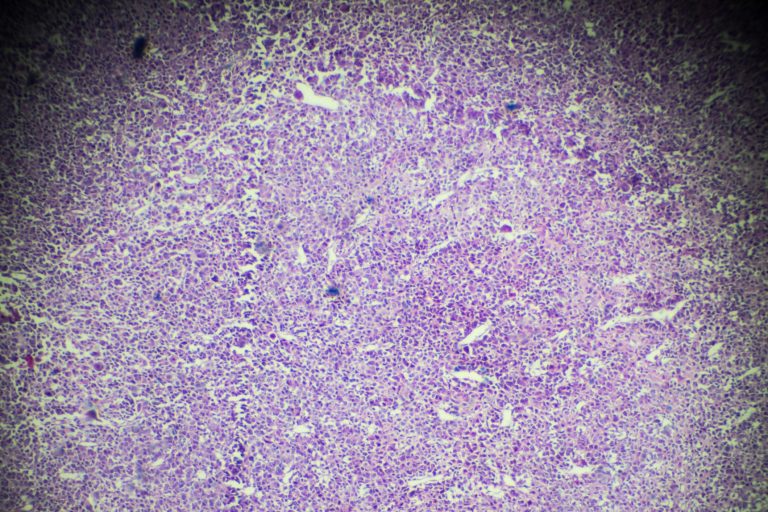
An exome sequencing study among 1,244 osteosarcoma patients revealed more of them harbored a pathogenic or likely pathogenic germline variant in a cancer-susceptibility gene compared to those without cancer. Specifically, 28 percent of osteosarcoma patients carry such a variant compared with 12.1 percent of individuals without cancer. Findings from the studypublished in JAMA Oncology, the NCI Retrospective Study of Genetic Risk Factors for Osteosarcoma,also revealed new variants previously not known to be associated with the disease.
Osteosarcoma, the most common cancerous bone tumor of children and adolescents, is paradoxically rare. Only about 800 to 900 new cases are diagnosed each year in the United States; more than half in children and adolescents.Because of its relatively rare prevalence, for this analysis, osteosarcoma samples were collected from 10 international research centers, making it the largest collection to date of a pediatric solid cancer evaluated for cancer-susceptibility gene variants.
In the study, researchers performed whole-exome sequencing on 1,104 patients and targeted sequencing on 104 patients with osteosarcoma, looking for pathogenic, or likely pathogenic, variants in 238 cancer-susceptibility genes. They compared the DNA from these patients with that from 1,062 people without cancer from four participating studies. For significant findings, they compared the frequency of variants in 27,173 individuals of non-Finnish European ancestry identified through the Exome Aggregation Consortium (ExAC) database.
While 281 of 1004 osteosarcoma patients (28 percent) had a risk variant, only 9.3 percent of people in ExAC did. Among those osteosarcoma patients with a high-risk gene variant, nearly three-quarters had a variant that mapped to an autosomal-dominant gene or a known osteosarcoma-associated cancer predisposition syndrome gene. The others had a variant in a previously unassociated gene.
Further analysis of 166 autosoma-dominant genes known to increase cancer risk when just one altered gene is inherited from one parent showed that 18 percent of sarcoma patient had a harmful/likely harmful variant compared with just 5 percent of non-cancer patients. And another 25 percent of the patients had a rare variant of uncertain significance that the authors predicted to be harmful.
Those sarcoma patients with harmful variants were slightly younger at diagnosis (15.3 years compared with 16.9 years). The highest prevalence of pathogenic variants was in children ten years and younger.
The study also revealed a higher rate of pathogenic or likely pathogenic variants in genes previously unknown to be associated with osteosarcoma—CDKN2A, MEN1, VHL, POT1, APC, MSH2, and ATRX—andin the Li-Fraumeni syndrome-associated gene, TP53. Of all the genes assessed, TP53gene variants had the highest frequency of the harmful or likely harmful cancer-susceptibility gene variants in children with osteosarcoma. This finding and the discovery of variants in these genes not known to have a link with osteosarcoma signals possible new research directions related to cancer susceptibility.
“Our data underscore the high frequency of potentially actionable cancer risk variants in patients with osteosarcoma, suggesting a need for further preventive and early detection strategies as well as a consideration of cascade genetic testing for the patient and the entire family,” the authors say. “We note that individuals harboring Li-Fraumeni syndrome– associated TP53mutations benefit from active screening, which could translate into improved outcomes.”











